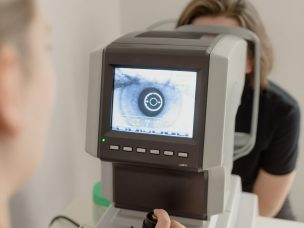The World Health Organization (WHO) collects, studies, and develops eye care information for people worldwide. At the 70th World Health Assembly, it was suggested, with the support of experts, that WHO examine the current state of eye care and draw attention to effective strategies to increase patient access to eye care services.
Although WHO reports data on a global scale, this information can be used by American eye care professionals to identify, better understand, and eliminate barriers to care faced in the United States.
Lack of access to eye care services has severe consequences for patients with visual impairment, including patients with neovascular age-related macular degeneration (wet AMD). Patients who have visual impairment are prone to lack of productivity and have a lesser quality of life. They are also more likely to suffer from anxiety, depression, and isolation than the general population.
Visual impairment makes all aspects of disease management difficult, even impossible, depending on the severity of one’s condition. If not diagnosed and treated early, patients with wet AMD suffer rapid and extensive vision loss. This vision loss can even result in legal blindness for many patients, affecting their ability to commute, thus presenting a barrier in access to care.
Environmental and social barriers can also threaten patient access to eye care. For example, if a patient lives in a rural area without transportation options, they may not have the means to keep their appointments. Those in urban areas may have public transportation available but lack the financial resources to cover costly monthly eye care expenses.
Without a social support system, patients are at risk of both mental and physical health complications. For example, without a caregiver or relative for support, patients with visual impairments may be unable to keep their eye care appointments. This isolation also results in an increased risk of depression. Another issue arises in health management if patients cannot properly take their medication due to their visual impairment.
These data suggest that elderly patients with AMD and other chronic eye diseases are likely to face many barriers in access to eye care services. These barriers are a result of socioeconomic, psychological, and environmental factors.
A call to action is made for eye care professionals to be aware of these barriers and provide patients with resources for eye care and general assistance, including transportation, support groups, and financial aid. These resources may aid in eliminating barriers to eye care for elderly patients in the United States [1].
Source:
[1] World Health Organization. (2019, October). World report on vision. https://www.who.int/publications/i/item/9789241516570










